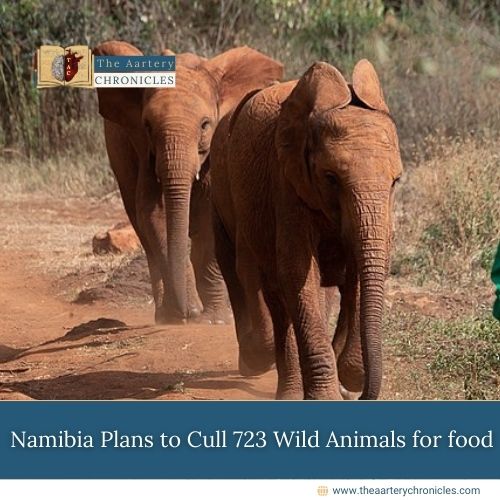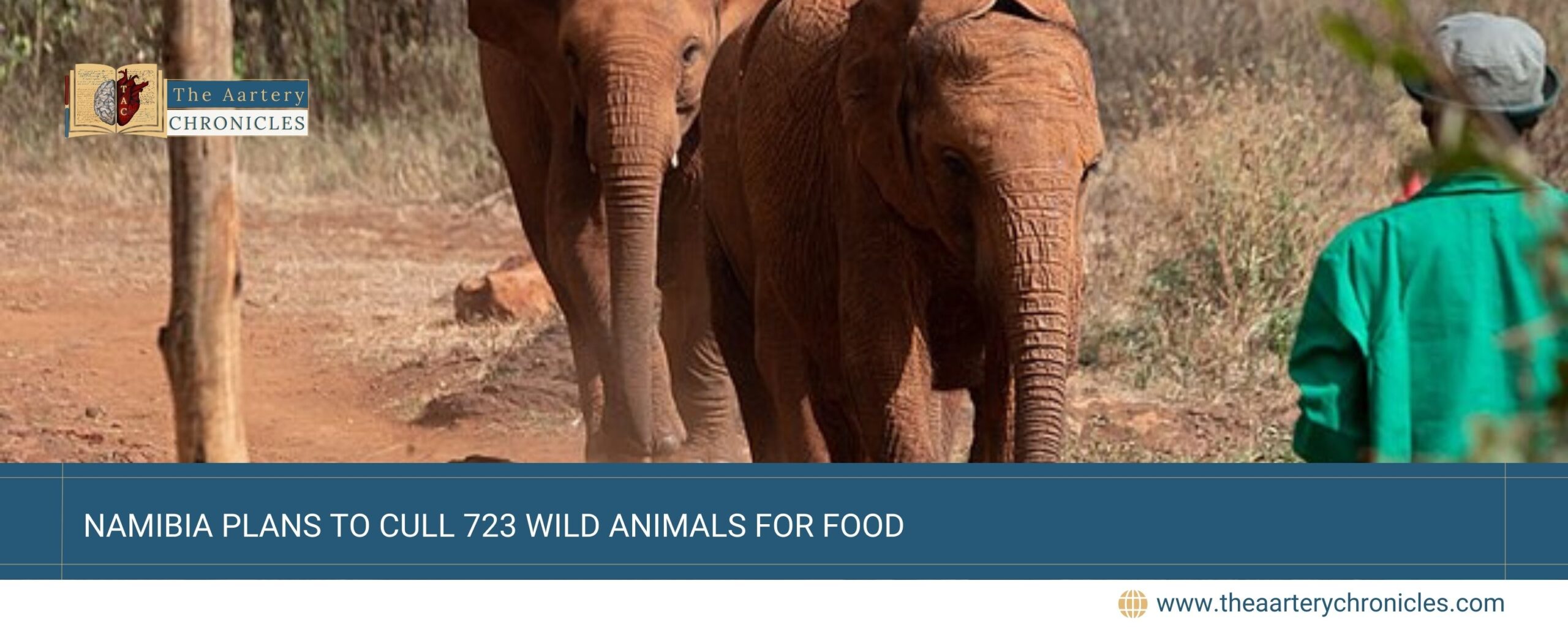

Namibia Plans to Cull 723 Wild Animals for food
Namibia is facing its worst drought in a century, putting nearly half of its 1.4 million population at risk of severe food shortages. In response, the government has announced plans to cull 723 wild animals, including 83 elephants, to provide food for the population and reduce conflicts between humans and wildlife. This measure is seen as necessary to ensure the survival of both people and animals in the country.
Details of the Culling Plan
300 zebras, 30 hippos, 50 impalas, 60 buffaloes, 100 blue wildebeest, and 100 elands (a species of antelope) will be culled. The culling is part of a strategy to manage the nation’s natural resources in a way that benefits its citizens, as mandated by Namibia’s constitution. The country aims to prevent dangerous encounters between humans and wildlife, which are expected to increase as both struggle to find water and vegetation during the drought.
Impact of Drought
The United Nations has highlighted the severity of Namibia’s situation, noting that 84% of the country’s food resources have already been depleted. The U.N. World Food Program reported that over 30 million people in southern Africa are affected by the ongoing drought. Experts emphasize that while droughts are not uncommon in this region, the current one is particularly severe and widespread.
Official Statements and Environmental Concerns
According to Namibia’s Ministry of Environment, Forestry, and Tourism, culling is essential to balance the needs of the population with the conservation of wildlife. Rose Mwebaza, director of the United Nations Environment Programme’s Africa Office, supported the decision, stating that sustainable harvesting of healthy wild animal populations can be an important food source for communities during crises.
Human-Wildlife Conflict
The government also aims to reduce the risk of human-wildlife conflicts, particularly with elephants, which, despite being herbivores, pose a lethal threat to humans. Last year, elephants killed at least 50 people in Zimbabwe, illustrating the potential dangers during times of scarce resources.
Conclusion
Namibia’s decision to cull wild animals is a controversial but necessary response . This reflects Namibia’s struggle to balance the immediate needs of its people with the long-term sustainability of its wildlife, in the face of an unprecedented environmental challenge.
Source: Inputs from various media Sources









